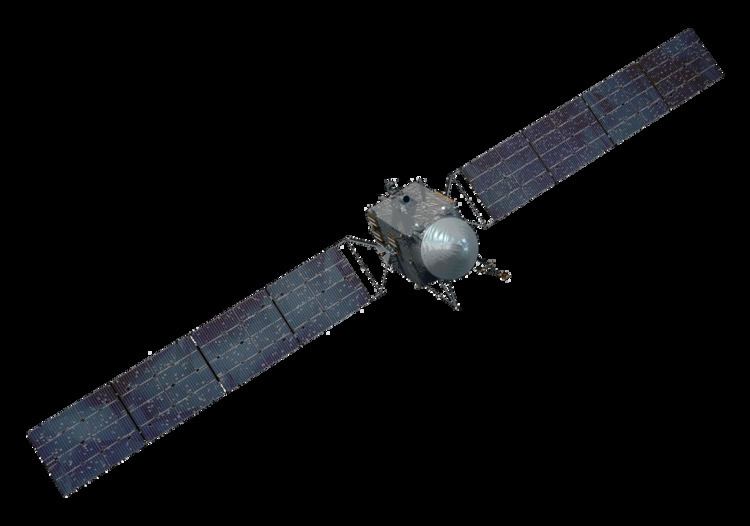Mission type Planetary science Mission duration Planned: 2 years Orbital insertion 2030 | Launch date October 2023 (2023-10) | |
 | ||
Psyche is an orbiter mission that will explore the origin of planetary cores by studying the metallic asteroid 16 Psyche. This asteroid may be the exposed iron core of a protoplanet, likely the remnant of a violent collision with another object that stripped off the outer crust. Lindy Elkins-Tanton of Arizona State University in Tempe, Arizona is the Principal Investigator, who proposed this mission to NASA's Discovery Program. NASA's Jet Propulsion Laboratory will manage the project.
Contents
16 Psyche is the heaviest known M-type asteroid, and is thought to be the exposed iron core of a protoplanet. Radar observations of the asteroid from Earth indicate an iron–nickel composition. On January 4, 2017, the Psyche mission was chosen along with the Lucy mission as NASA's next Discovery class mission.
History
Psyche was submitted as part of a call for proposals for the next mission(s) for Discovery Program that closed in February 2015. It was shortlisted on September 30, 2015, as one of five finalists and awarded $3 million for further proposal development. One aspect of selection was enduring the "site visit" in which about 30 NASA personnel come and interview, inspect, and question the proposers and their spacecraft plan.
On January 4, 2017, it was selected along with Lucy as one of two winners of this round of Discovery mission selection, with launch set for 2023 as the 14th Discovery mission.
Mission overview
The Psyche spacecraft would use solar electric propulsion, and the notional payload would be an imager, a magnetometer, and a gamma-ray spectrometer.
Data shows 16 Psyche asteroid to have a diameter of about 252 km (157 mi). Scientists believe that Psyche could be the exposed core of an early planet that could have been as large as Mars and lost its surface in a series of violent collisions.
The mission will launch in 2023 and arrive in 5 years to perform 2 years of science. The spacecraft will be built by NASA JPL in collaboration with Space Systems/Loral and Arizona State University.
Objectives
Differentiation was a fundamental process in shaping many asteroids and all terrestrial planets, and direct exploration of a core could greatly enhance understanding of this process. The Psyche mission would characterize 16 Psyche's geology, shape, elemental composition, magnetic field, and mass distribution. It is expected that this mission will increase the understanding of planetary formation and interiors. The science questions this mission will address are:
- Is asteroid 16 Psyche the stripped core of a differentiated planetesimal, or was it formed as an iron-rich body? What were the building blocks of planets? Did planetesimals that formed close to the Sun have very different bulk compositions?
- If 16 Psyche was stripped of its mantle, when and how did that occur?
- If 16 Psyche was once molten, did it solidify from the inside out, or the outside in?
- Did 16 Psyche produce a magnetic dynamo as it cooled?
- What are the major alloy elements that coexist in the iron metal of the core?
- What are the key characteristics of the geologic surface and global topography? Does 16 Psyche look radically different from known stony and icy bodies?
- How do craters on a metal body differ from those in rock or ice?
Scientific payload
Possible payload:
